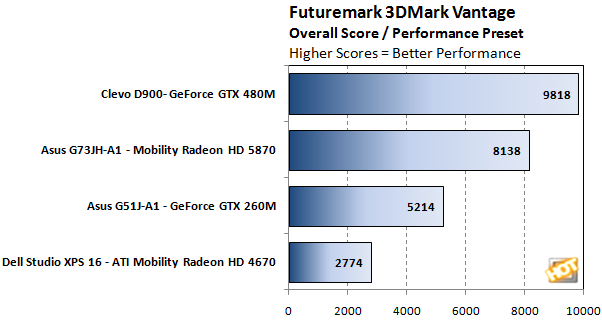Next we fired up 3DMark Vantage, which also has a bit more dependency on CPU performance, since it does have a module in the test suite specifically for software based rendering. Regardless, since this test is so widely known, we thought it made sense to throw it into the mix. From here on out, we'll be dialing up the eye candy full tilt on real game titles, which will place virtually all the emphasis on the GPUs being tested.
 |
| Futuremark 3DMark Vantage |
| Synthetic DirectX Gaming |
|
|

3DMark Vantage
|
The latest version of Futuremark's synthetic 3D gaming benchmark, 3DMark Vantage, is specifically bound to Windows Vista-based systems because it uses some advanced visual technologies that are only available with DirectX 10, which y isn't available on previous versions of Windows. 3DMark Vantage isn't simply a port of 3DMark06 to DirectX 10 though. With this latest version of the benchmark, Futuremark has incorporated two new graphics tests, two new CPU tests, several new feature tests, in addition to support for the latest PC hardware.
|



Here the GeForce GTX 480M-infused notebook punches out a roughly 20% higher 3DMark score versus the Mobility Radeon HD 5870-enabled Asus G73 notebook. Though the NVIDIA GPU has its PhysX advantage in this test as well and again, we'd caution in this test that there is a system-level advantage factored into the scores. So, we'll journey on to real-world, GPU-intensive game tests next.










